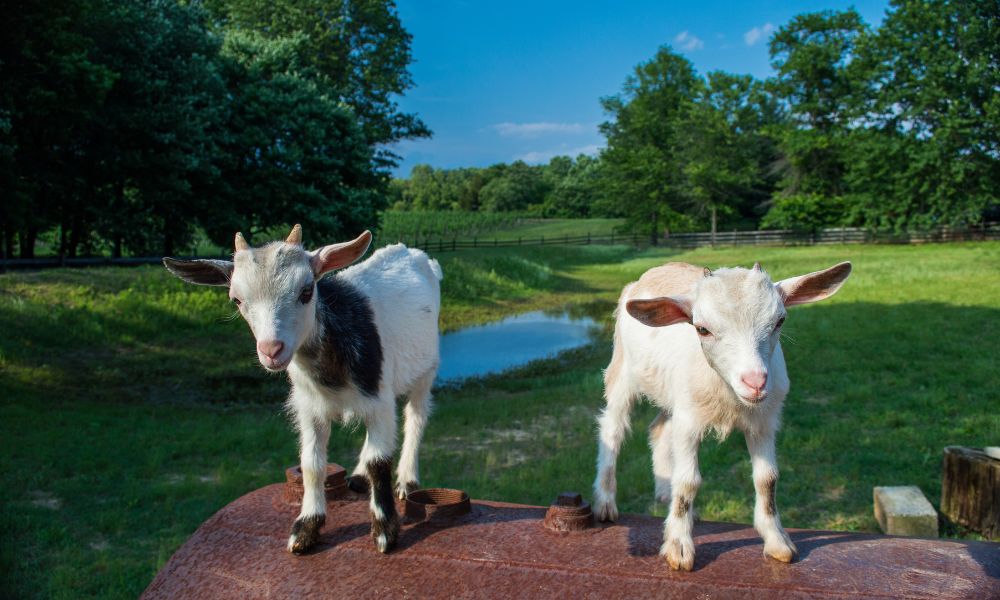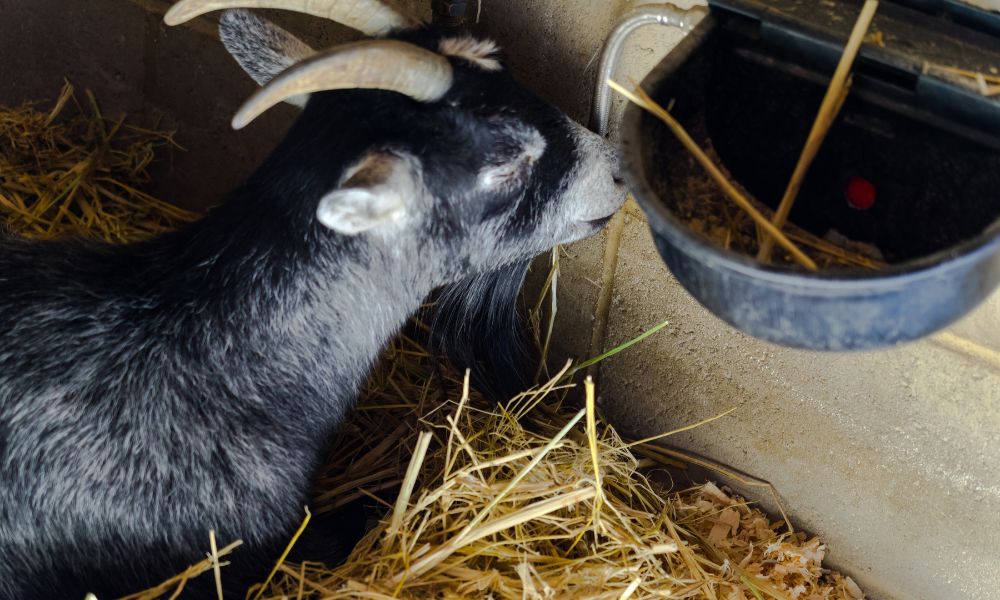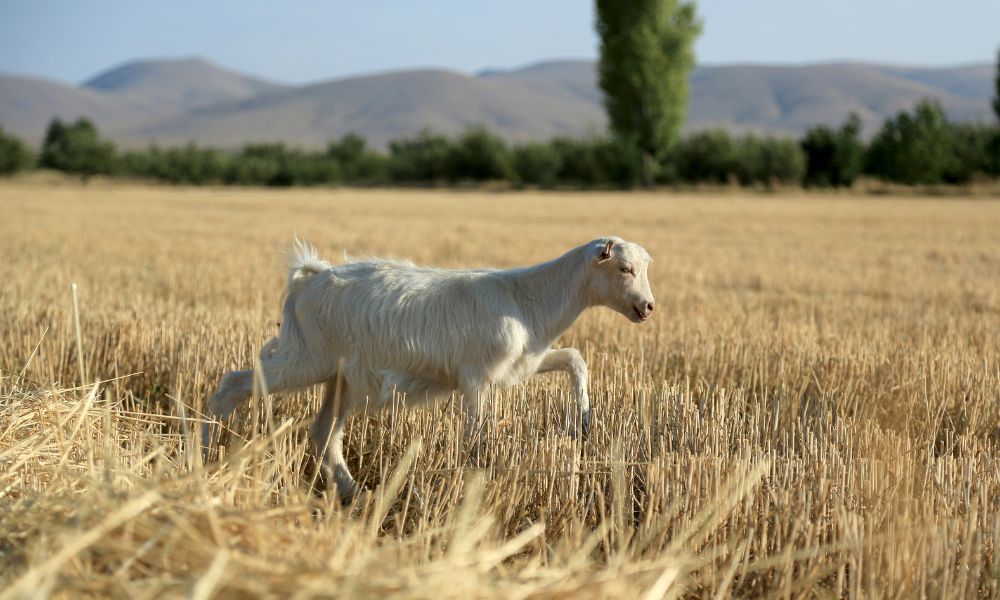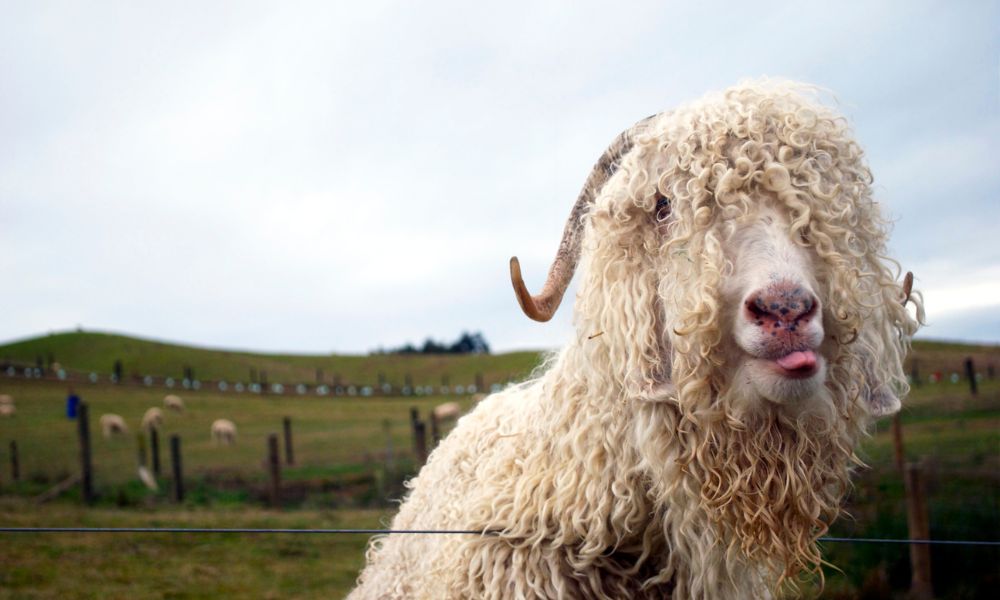Pygmies have, for obvious reasons, become one of the most popular pet breeds of goat in the world.
They are the smallest of all goats, looking like an ordinary goat simply scaled down.
They’ve captured our hearts, and it’s easy to understand why.
But there are many misconceptions about pygmy goats that lead to unfortunate situations—such as their horns.
Do pygmies have horns?
Pygmies may be popular for their small size, but this doesn’t mean that they don’t have the potential issues associated with other breeds.
You still need to be sure they are provided for in every way possible to avoid problem behavior.
Let’s find out more.

Can pygmy goats be born without horns?

It can certainly happen, yes, and it is not uncommon.
A goat born naturally without horns is known as a polled goat.
While pygmies are not a polled breed—that is, an entire breed that virtually never grows horns—individuals without horns are not uncommon.
The reasons for this are simple genetic mutations, typically.
Goats are born without the gene for growing horns.
But let’s first clear up some potential confusion.
Typically, all goats are born without developed horns.
Many kids will be born with no visible horns at all, and they will not grow in until they are mature.
This is how virtually all pygmy goats are born—“without” horns.
But those horns will grow later on.

This is the most common, although they are sometimes born with visible horns of some degree.
Giving birth to a horned goat would, obviously, be a great deal harder on the mother than otherwise.
This is why they tend to grow in later.
But, again, pygmy goats can be born naturally polled, although they are more commonly born and develop horns later on.
Sometimes, pygmies are also artificially polled using a hot iron to prevent the horns from forming.
In any case, you should assume that pygmies will have horns before deciding to get any.
You can’t rely on them being polled.
So, when do their horns come in?
At what age do pygmy goats get horns?
Generally, the development of horns will begin at around three weeks old.
The horn tissue will start to attach to the skull, and you’ll be able to see a small nub.
This is pretty standard for goats of all breeds.
The horns will then continue to grow for about the next five years of the goat’s life.
They may continue to grow after that, but only to a very small degree.
One study showed that 93% of horn growth was completed by the time the goat was three years old.
So, it takes them rather a long time to fully develop their horns.
But they will be formidable weapons even long before they are fully developed.
Even a pygmy goat will be able to give you a pretty considerable butt with its small horns, so don’t think that you’ll have an easy goat to handle just because it’s a pygmy!
Are there any kinds of goats that do not have horns, then?
What kind of goats do not have horns?
Naturally speaking, all breeds of goat have horns.
Some have been polled, but this is really something you have to do with every individual.

They are not, typically, born polled—although one or two breeds are.
Breeding polled goats requires pairing two naturally polled goats to begin with.
Nigerian dwarfs are very commonly polled, and it is easier to find polled individuals to breed with one another.
However, the breed as a whole is not polled.
This is true of all goat breeds—there are polled populations, but there is no single breed that is entirely polled.
Nubians and LaMancha are more examples of goats that are very commonly born polled.
Pygmies do not fit into this list, and more often than not, they are born with horns.
Disbudding is the practice of preventing the horns from growing after birth, but this is becoming less and less popular as it is considered cruel.
Why do goats have horns?
Horns play a number of important roles.
The most obvious is to do with males competing with one another.
They use their horns to have battles in order to compete for female attention or even food and space.
They are also used as protection against predators.
Though goats will flee predators, their horns make for formidable defences against being cornered by predators.
But they are also important in regulating body temperature.
Some breeds, like the Angora goat, need their horns in order to be able to properly dissipate heat from their bodies.

Without their horns, they would overheat due to their thick, woolly coats.
If you were in the market for a pygmy goat because you thought they lacked horns or even that you didn’t have to worry about their horns at all, then you were unfortunately mistaken.
Pygmy goats make fantastic pets, but they’re still just as much of a handful as bigger breeds.
Owning a goat is a big commitment, even with a diminutive pygmy—so make sure you are prepared for that.
